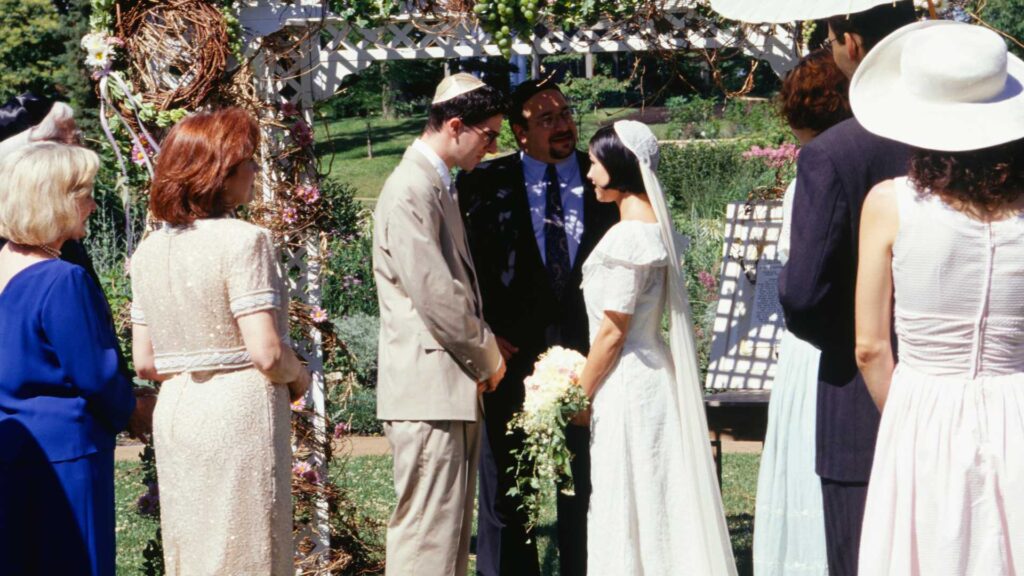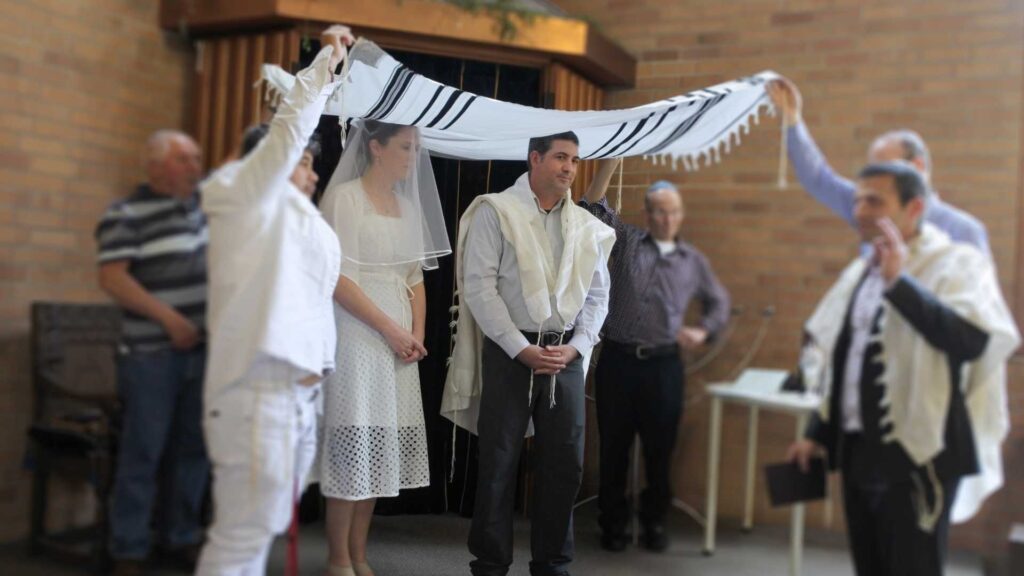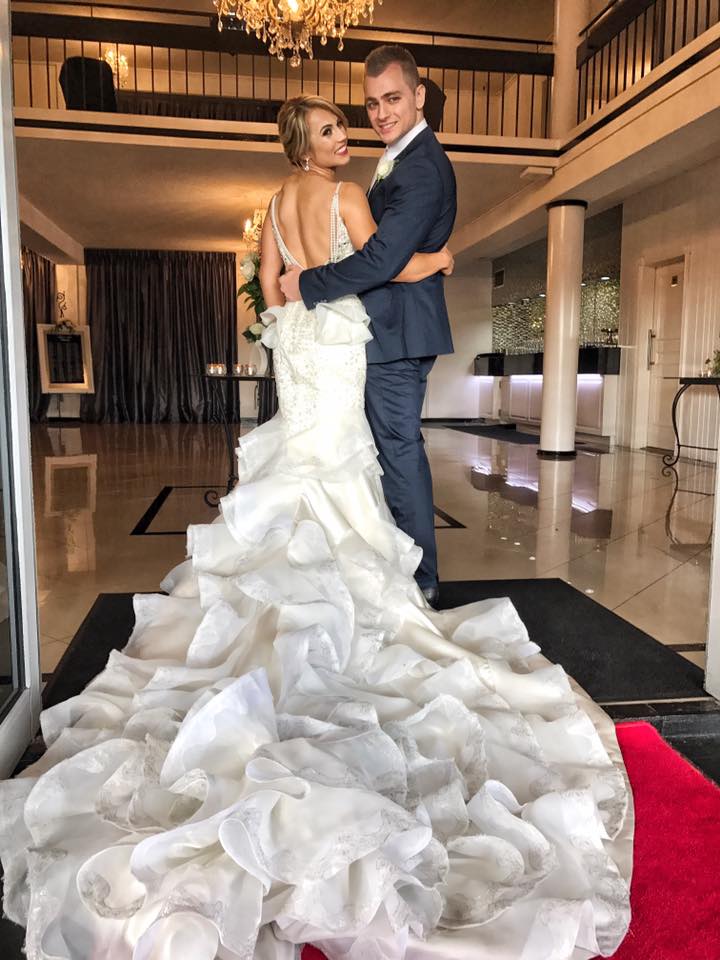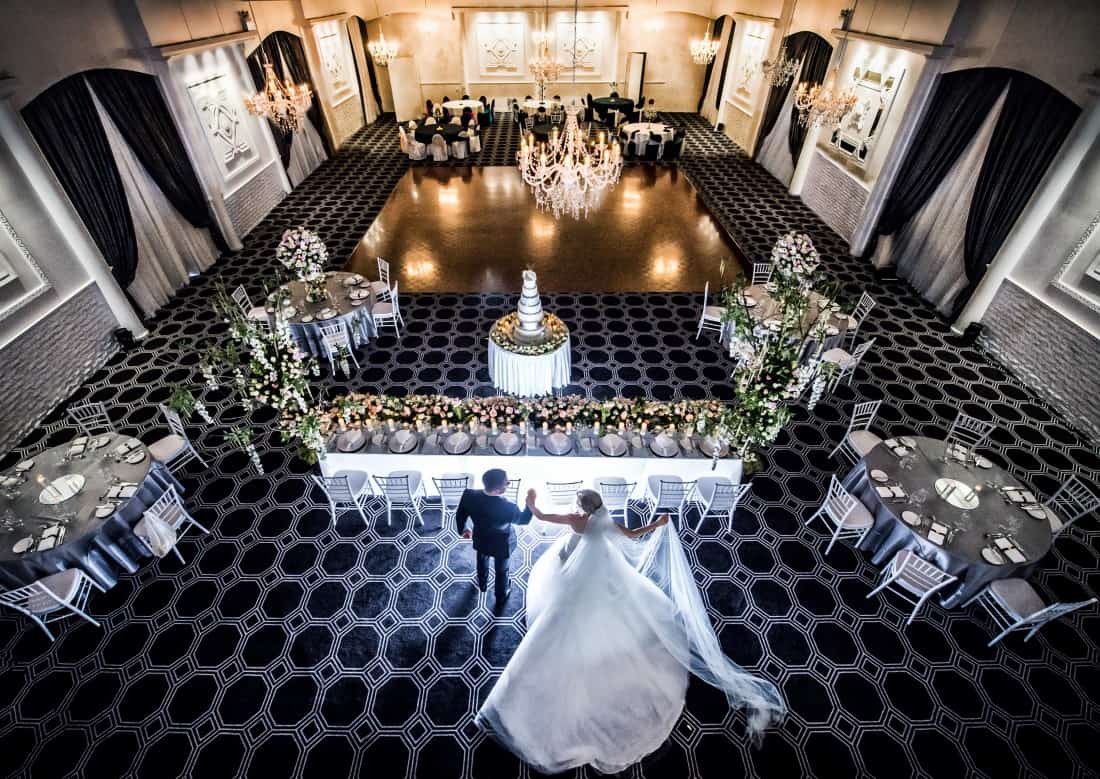Jewish weddings are rich in traditions, steeped in centuries of customs that highlight the couple’s commitment to each other, the Jewish community, and God. These customs not only symbolise the bond between the couple but also provide a sense of continuity, connecting modern ceremonies with ancient rituals. This guide will walk you through the most common questions about Jewish weddings, alongside explanations of the symbolic traditions that make them unique.
Let’s Get Straight to the Point
Jewish weddings are rich in tradition, with customs symbolising the couple’s bond and commitment to the community and God. Pre-ceremony rituals include separate receptions for the bride and groom (Kabbalat Panim), breaking a plate to symbolise the seriousness of marriage, and fasting. Key moments of the ceremony include the Ketubah signing (a marriage contract), the Bedeken (groom veiling the bride), and the walk to the Chuppah, symbolising their new home.
The bride may circle the groom, and the couple exchanges vows and rings under the Chuppah. The ceremony concludes with the breaking of a glass and the Sheva B’rachot (seven blessings). Following the ceremony, the couple has private time (Yichud) and celebrates with a meal (Seudat Mitzvah) featuring the Hora dance, where they are lifted on chairs.
Jewish Wedding Customs
Jewish wedding traditions are both beautiful and meaningful. Here are some of the key rituals that form part of a Jewish wedding ceremony:
Kabbalat Panim
Jewish wedding days begin with the Kabbalat Panim, or “reception of faces.” This is where the bride and groom host separate pre-ceremony receptions. The groom’s reception is called the Chosen’s Tish, where his male guests toast and sing, while the bride’s reception, known as Hachnasat Kallah, sees the bride seated like a queen among her female guests.
Key Points:
- Kabbalat Panim: Separate receptions for bride and groom.
- Chosen’s Tish: Male guests sing and toast the groom.
- Hachnasat Kallah: Female guests surround the bride.
Breaking a Plate
One unique aspect of Jewish weddings is the breaking of a plate by the mothers of the bride and groom. This custom symbolises the seriousness of marriage, representing the idea that just as a broken plate cannot be fully repaired, a broken relationship is difficult to mend.
Fasting
In line with Jewish tradition, some couples choose to fast on their wedding day, treating it as a day of atonement similar to Yom Kippur. The fast begins at dawn and ends with the couple’s first meal together after the ceremony.
The Tish
Before the ceremony, the groom holds a Tish, where he attempts to discuss the week’s Torah portion while being joyfully interrupted by his male friends and family. This event is meant to create a light-hearted atmosphere before the more solemn moments of the wedding.
Ketubah Signing
The Ketubah is a Jewish marriage contract outlining the groom’s responsibilities to his bride. This legal document is signed by two witnesses before the ceremony and is often read aloud during the wedding, highlighting the groom’s commitment to his new wife.
Bedeken: The Veiling Ceremony
In a ritual called Bedeken, the groom veils the bride before the ceremony, ensuring that he is marrying the right woman, a nod to the biblical story of Jacob, Leah, and Rachel. This custom is an important reminder of love that goes beyond physical beauty.
The Walk to the Chuppah
The couple, accompanied by their parents, walks to the Chuppah (a wedding canopy symbolising the home they will build together). The Chuppah is open on all sides, representing hospitality and the welcoming of loved ones into the couple’s life. It can be decorated with a prayer shawl (tallit) or other meaningful items.
Vows Under the Chuppah
Once under the Chuppah, the couple exchanges vows. Unlike Western traditions, Jewish weddings don’t always involve spoken vows. Instead, the focus is on the groom giving the bride a ring while saying, “You are sanctified to me with this ring according to the laws of Moses and Israel.”
Circling the Groom
A traditional custom in Ashkenazi weddings involves the bride circling the groom either three or seven times. This act is thought to represent the creation of a new family circle and symbolise protection against negative influences.
Erusin (Betrothal) and Nissuin (Nuptials)
Jewish weddings consist of two stages: Erusin (betrothal) and Nissuin (nuptials). Erusin is the formal betrothal and involves blessings over a cup of wine. The Nissuin marks the formal marriage and includes the recitation of the Sheva B’rachot, or seven blessings, often by different family members or friends.
The Seven Blessings
The Sheva B’rachot celebrate creation, love, and the continuation of Jewish life, and they are recited over a second cup of wine, symbolising the joining of two souls. These blessings are one of the highlights of the ceremony, offering wishes of happiness and harmony to the couple.
Breaking the Glass
At the conclusion of the ceremony, the groom (and sometimes the bride) steps on a glass wrapped in cloth, shattering it. This act has multiple interpretations, the most common being a reminder of the destruction of the Temple in Jerusalem, signalling that even in joyous moments, Jews remember historical tragedies.
The breaking of the glass also symbolises the fragility of human relationships and the hope that the couple will always remain strong, despite challenges.
Mazel Tov!
Immediately after the glass is broken, the guests shout “Mazel tov!” meaning “good fortune” or “congratulations.” This is the moment when the celebratory mood of the event is set, and the guests move into the reception with dancing and festivities.
Yichud
Following the ceremony, the couple partakes in a brief period of seclusion known as Yichud, where they have time to reflect privately on their new status as husband and wife. This seclusion, which typically lasts around 10 minutes, allows the couple to share a quiet moment before joining their guests for the reception.
The Wedding Feast: Seudat Mitzvah
Jewish wedding receptions are filled with joyous celebrations, including dancing, feasting, and lively music. The meal, known as Seudat Mitzvah, is a celebratory feast where the couple and their guests indulge in food, music, and dancing. The highlight of the dancing is the Hora, a traditional circle dance in which the bride and groom are lifted on chairs while holding a handkerchief between them.
The Hora and Mezinke
During the Hora, guests dance energetically in a circle, celebrating the couple’s marriage. The Mezinke, meanwhile, is a special dance performed by the parents of the bride or groom when their youngest child is married.
Jewish weddings are vibrant, meaningful celebrations filled with centuries-old traditions. From the pre-ceremony customs like Kabbalat Panim and the Tish to the poignant breaking of the glass and the joyous Hora, every aspect of the wedding reflects the deep connection between the couple, their faith, and the community around them. By understanding these rituals, guests can appreciate the richness of Jewish culture and the significance behind each tradition.




